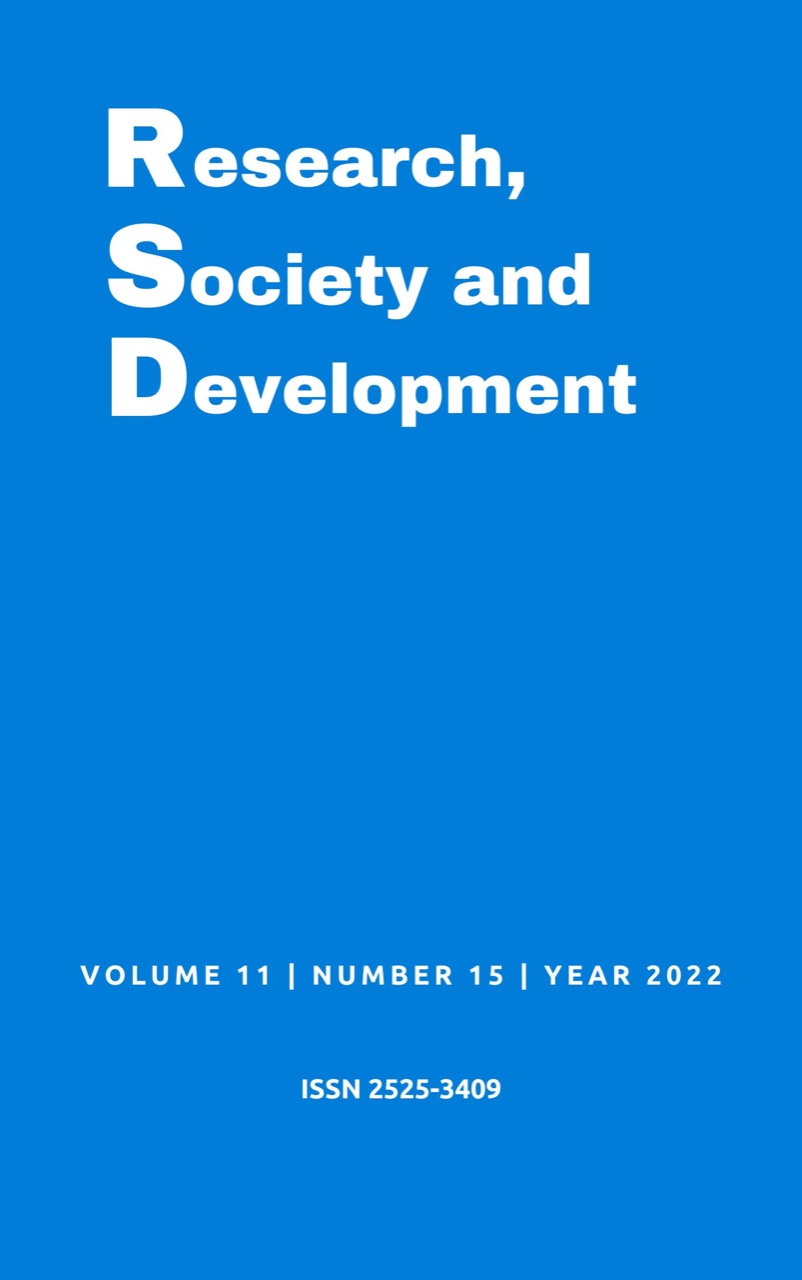Applicability of the Ohmic Model for voltammetric growth of ZnO on galvanized steel sheets containing Sb or Pb
DOI:
https://doi.org/10.33448/rsd-v11i15.37340Keywords:
Zinc oxide, Galvanized steel sheet, Ohmic model.Abstract
The aim of this study was to verify the applicability of the Ohmic Model with variable ionic resistivity to the voltammetric zinc oxide growth on galvanized steel sheets, without chromate passivating film. Two kind of galvanized steel sheets were studied: one produced from a bath of molten zinc containing antimony and the other containing lead. The galvanized steel sheets produced from a bath containing Sb presented better performance against corrosion in comparison on with those produced from a bath containing Pb. The electrochemical experiments were performed in a buffer solution of pH 8.7 with of 0.3 mol L-1 H3BO3 plus 0.15 mol L-1 Na2B4O7. It was found that the passivating zinc oxide grown on the galvanized steel sheet containing Sb showed higher ionic resistivity than that of the galvanized sheet containing Pb. This can explain the corrosion results.
References
Asgari, H., Toroghinejad, M. R., & Golozar, M. A. (2007). On texture, corrosion resistence and morphology of hot-dip galvanized zinc coatings. Applied Surface Science, 253, pp. 6769 - 6777. doi:10.1016/j.apsusc.2007.01.093
Asgari, H., Toroghinejad, M. R., & Golozar, M. A. (2009). Effect of coatings thickness on modifyind the texture and corrosion performace of hot-dip galvanized coatings. Current Applied Physics, 9, pp. 59 - 66. doi:10.1016/j.cap.2007.10.090
Boscheto, E. P. (2008). Simulação do crescimento de filmes sobre metais. O caso voltamétrico. Dissertação (Mestrado) – Universidade Federal de São Carlos. São Carlos, São Paulo, pp. 1-69.
Cameron, D. J., Harvey, G. J., & Ormay, M. K. (1965). The spangle of galvanized iron. Journal Australian Institute of Metals, 10, p. 225.
Chang, S., & Shin, J. C. (1994). The effect of antimony additions on hot dip coatings. Corrosion Science, 36, pp. 1425-1436. doi:10.1016/0010-938X(94)90190-2
D'Alkaine, C. V., & Santanna, M. A. (1998). Passivating films on nickel in alkaline solutions II. Ni(II) anodic film growth: quantitative treatment and the influence of the OH− concentration. Journal of Electroanalytical Chemistry, 457, 13-21. doi:10.1016/S0022-0728(98)00227-7
D'Alkaine, C. V., Garcia, C. M., Brito, G. A., Pratta, P. M., & Fernandes, F. P. (2007). Disruption processes in films grown and reduced electrochemically on metals. Journal of Solid State Electrochemistry, 11, 1575-1583. doi:10.1007/s10008-007-0361-x
D'Alkaine, C. V., Souza, L. M., & Nart, F. C. (1993). The anodic behaviour of niobium—II. General experimental electrochemical aspects. Corrosion Science, 34, 117-127. doi:10.1016/0010-938X(93)90263-G
D'Alkaine, C. V., Tulio, P. C., & Berton, M. A. (2004). Quantitative Ohmic model for transient growths of passivating films: The voltammetric case. Electrochimica Acta, 49, 1989-1997. doi:10.1016/j.electacta.2003.12.029
Fedel, M., Olivier, M., Poelman, M., Deflorian, F., Rossi, S., & Druart, M. -E. (2009). Corrosion protection properties of silane pre-treated powder coated galvanized steel. Progress in Organic Coatings, 66, 118-128. doi:10.1016/j.porgcoat.2009.06.011
Hamlaoui, Y., Tifouti, L., & Pedraza, F. (2009). Corrosion behaviour of molybdate–phosphate–silicate coatings on galvanized steel. Corrosion Science, 51, 2455-2462. doi:10.1016/j.corsci.2009.06.037
Hosseini, M., Ashassi-Sorkhabi, H., & Ghiasvand, H. A. (2007). Corrosion protection of electro-galvanized steel by green conversion coatings. Journal of Rare Earths, 25, 537-543. doi:10.1016/S1002-0721(07)60558-4
Kobayashi, Y., & Fujiwara, Y. (2006). Effect of 〖SO〗_4^(-2) on the corrosion behavior of cerium-based conversion coatings on galvanized steel. Electrochimica Acta, 51, pp. 4236-4242. doi:10.1016/j.electacta.2005.11.043
Lin, B., Lu, J., Kong, G., & Liu, J. (2007). Growth and corrosion resistance of molybdate modified zinc phosphate conversion coatings on hot-dip galvanized steel. Transactions of Nonferrous Metals Society of China, 17, 755-761. doi:10.1016/S1003-6326(07)60169-1
Marder, A. R. (2000). The Metallurgy of zinc-coated steel. Progress in Materials Science, 45, pp. 191 - 271. doi:10.1016/S0079-6425(98)00006-1
Meng, G., Zhang, L., Shao, Y., Zhang, T., Wang, F., Dong, C., & Li, X. (2009). Effect of refining grain size on the corrosion behavior of Cr(III) conversion layers on zinc coatings. Scripta Materialia, 61, 1004-1007. doi:10.1016/j.scriptamat.2009.08.004
Motta, H. N. (2000). Crescimento de óxido de cádmio sobre cádmio em meio alcalino. Dissertação (Mestado) – Universidade Federal do Paraná. Curitiba, Paraná, pp. 1-174.
Motta, H. N. (2005). Estudo da cinética de crescimento de óxidos sobre metais. O caso do cádmio em meio alcalino. Tese (Doutorado) – Universidade Federal do Paraná. Curitiba, Paraná, pp. 1-214.
Ramezanzadeh, B., Attar, M. M., & Farzam, M. (2010). Corrosion performance of a hot-dip galvanized steel treated by different kinds of conversion coatings. Surface and Coatings Technology, 205, 874-884. doi:10.1016/j.surfcoat.2010.08.028
Seré, P. R., Culcasi, J. D., Elsner, C. I., & Di Sarli, A. R. (1999). Relationship between texture and corrosion resistence in hot-dip galvanized steel sheets. Surface and Coatings Technology, 122, pp. 143 - 149. doi:10.1016/S0257-8972(99)00325-4
Taouil, A. E., Mahmoud, M. M., Lallemand, F., Lallemand, S., Gigandet, M.-P., & Hin, J.-Y. (2012). Corrosion protection by sonoelectrodeposited organic films on zinc coated steel. Ultrasonics Sonochemistry, 19, 1186-1193. doi:10.1016/j.ultsonch.2012.03.005
Tomachuk, C. R., Melo, H. G., & Bellucci, F. (2006). Estudo de filmes orgânicos aplicados em eletrozincados passivados isentos de cromo hexavalente. 17° CEBECIMat. Foz do Iguaçú, Paraná, Brasil.
Downloads
Published
Issue
Section
License
Copyright (c) 2022 Tiago Brandão Costa; Tania Maria Cavalcanti Nogueira

This work is licensed under a Creative Commons Attribution 4.0 International License.
Authors who publish with this journal agree to the following terms:
1) Authors retain copyright and grant the journal right of first publication with the work simultaneously licensed under a Creative Commons Attribution License that allows others to share the work with an acknowledgement of the work's authorship and initial publication in this journal.
2) Authors are able to enter into separate, additional contractual arrangements for the non-exclusive distribution of the journal's published version of the work (e.g., post it to an institutional repository or publish it in a book), with an acknowledgement of its initial publication in this journal.
3) Authors are permitted and encouraged to post their work online (e.g., in institutional repositories or on their website) prior to and during the submission process, as it can lead to productive exchanges, as well as earlier and greater citation of published work.


